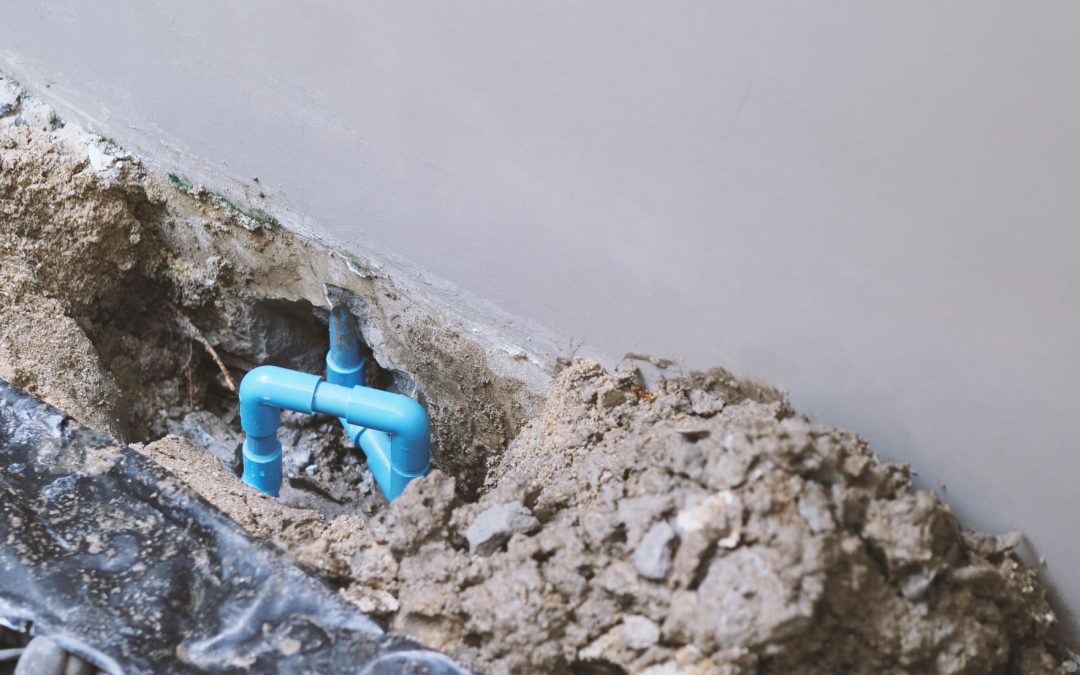Water can be one of the most damaging elements to our home’s foundation. Whether it’s from heavy rain, poor drainage, or plumbing leaks, excess moisture can seep into the foundation and cause cracks, weakening the entire structure. Understanding how water affects your foundation is crucial for maintaining a safe and stable home.
Many homeowners may not realize the importance of proper drainage and waterproofing. Water that is not directed away from the house can accumulate around the foundation, leading to serious problems over time. By taking the right measures, we can protect our foundations from water damage and prolong the lifespan of our homes.
This article will guide you through the process of understanding how water damages foundations. We’ll cover effective drainage solutions, waterproofing techniques, and routine maintenance tips to keep your foundation in top condition. By staying informed and proactive, you can ensure your home remains safe and secure.
Visible Cracks in Walls and Floors
One of the earliest signs of foundation problems is visible cracks in your walls and floors. These cracks can appear in various places, including brick walls, drywall, and even in the foundation itself. Cracks may start small, but if they widen over time, this could indicate that your foundation is shifting or settling. It’s important to monitor these cracks carefully. If they run diagonally or are wider than 1/8 inch, that’s a red flag.
Beyond size and direction, the location of the cracks can also provide clues about what’s happening with your foundation. For example, cracks above doorways or windows are often signs of foundation movement. These areas are usually weaker, so any shift in the foundation is likely to affect them first. By keeping an eye on the cracks, you can better understand the extent of the problem and take action before it gets worse.
Doors and Windows That Stick or Won’t Close
Another common sign of foundation issues is when doors and windows start to stick or won’t close properly. This usually happens because the foundation has shifted, causing the frames to become misaligned. When you notice that a door or window is suddenly difficult to open or close, it’s important to investigate further. Sometimes, slight adjustments can fix the problem, but if it persists, the issue likely lies with the foundation.
In some cases, you might also notice gaps around the doors and windows. These gaps can let in drafts, increasing your energy bills and making your home less comfortable. Misaligned frames and sticking doors or windows can create security risks as well since locks may not fit properly. Addressing these issues early can help maintain both the comfort and safety of your home while preventing more significant foundation problems down the line.
Waterproofing Techniques for Your Foundation
Waterproofing your foundation is a vital step in protecting your home from water damage. One popular method is applying a waterproof sealant to the exterior walls of the foundation. This sealant acts as a barrier, preventing water from seeping into the concrete. These sealants can be found in both liquid and solid forms, offering various levels of protection depending on the specific needs of your home.
Another effective waterproofing technique involves installing a drainage system around your foundation. French drains, for example, are trenches filled with gravel and a perforated pipe that redirects water away from your home. This method helps to keep the surrounding soil dry, reducing the risk of water infiltration into your foundation. Additionally, sump pumps can be installed in basements to collect and remove excess water that accumulates indoors.
In some cases, adding a layer of waterproof membrane to your foundation walls can provide extra protection. These membranes are typically made of rubber or plastic and are designed to be highly resistant to water. When combined with other waterproofing methods, these membranes can significantly enhance the durability and longevity of your foundation.
Routine Maintenance Tips to Prevent Water Damage
Regular maintenance is crucial for preventing water damage to your foundation. Start by inspecting your home’s gutters and downspouts to ensure they are clean and functioning properly. Clogged gutters can cause water to overflow and collect around your foundation, increasing the risk of damage. Regularly cleaning leaves, debris, and dirt from your gutters will help maintain proper water flow.
Next, check the grading around your home. The ground should slope away from your foundation, directing water away instead of allowing it to pool nearby. Adding soil or reshaping the landscape can help achieve the correct slope. Additionally, installing downspout extenders can further direct water away from the base of your home.
Another key maintenance tip is to look for and repair cracks in your foundation as soon as they appear. Small cracks can quickly become large problems if left unattended. Use appropriate sealants to fill these cracks and prevent water from seeping in. Regularly monitoring the condition of your foundation allows you to catch and address issues early, minimizing potential damage.
Conclusion
Keeping your foundation dry and secure is essential for maintaining the integrity and safety of your home. By employing effective waterproofing techniques and staying vigilant with routine maintenance, you can protect your foundation from the damaging effects of water. Properly graded landscapes, functional gutters, and timely repairs all contribute to a healthy, long-lasting foundation.
If you’re experiencing any foundation issues or want to implement preventative measures, reach out to Lift-Texas Construction. We offer expert cement foundation repair tailored to your needs. Contact us today to ensure your foundation remains strong and durable for years to come.

